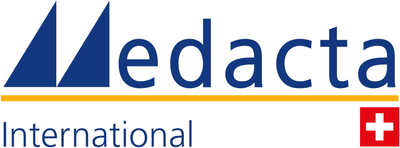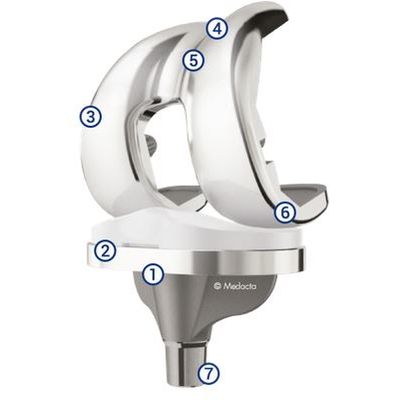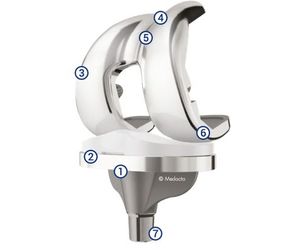

Medacta International
- Home
- Companies
- Medacta International
- Products
- Medacta - Model GMK- Primary - Total ...

Medacta - Model GMK- Primary - Total Knee System
In 2003 Medacta conceived a simple, complete and homogeneous system for knee replacement. The GMK Primary System is conceived and designed adopting state-of-the-art solutions respecting the natural anatomy and kinematics of the knee joint.
Most popular related searches
knee system
femoral component
knee flexion
femoral joint
bone preservation
knee joint
knee replacement
anatomy
bone design
knee replacement system
- Asymmetric tibial tray improves the coverage of the tibial resection, minimizing the risk of overhang and sinking[14]
- Mirror polished tibial tray minimizes the risk of backside wear[15]
- Bone preserving design: minimum condylar resections and posterior-stabilized version without any box needed
- Besides the traditional symmetric inset patella, GMK offers also the asymmetric resurfacing patella increasing the patella-femur contact surface, reducing stress on polyethylene and improving stability[1,2,3,4,5,6]
- Anatomic design of the trochlea potentially optimizes the patellar tracking, reducing stress on patellar tendon and the risk of patella dislocation[2]
- J-curved sagittal profile potentially allows more natural knee kinematics, improves knee flexion and promotes rollback of the femoral component[7]
- Large tibial fins ensure rotational stability, moreover a 11x65 mm cemented tibial extension stem is available when further stabilization is needed

ARTICULAR PROFILE
J-curved sagittal profile allows more natural knee kinematics, improves knee flexion and promotes femoral roll back [7,8]
ANTI-NOTCHING ANTERIOR CUT
The 4° sloped anterior cut creates a wedge effect that improves primary stability and reduce the risk of anterior notching.
PATELLO-FEMORAL JOINT
The GMK Primary patello-femoral joint is designed to mimic the natural anatomy and kinematics of the healthy knee in order to optimize patella tracking, improve articular stability and reduce polyethylene wear. GMK incorporates state of the art design features:
- Deepened trochlear groove: allowing the patella to articulate at the same height as the normal patella, reducing the occurrence of patella clunk and crepitus. [1]
- Wide contact area between patella and femoral component: reducing polyethylene stress due to compressive forces. [2,3,4]
- Higher anterior-lateral wall of the femoral component: guiding and supporting the patella in the initial phases of flexion.
- 6° oriented sulcus: limiting lateral shear forces on the patella component. [2,6]
- Asymmetric resurfacing patella with a prolonged lateral flange: providing better contact surface and mimicking the shape of natural patella. [5]
